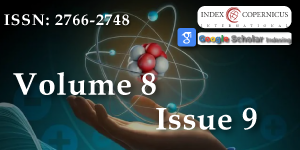The Mystery of Space: A Way to Bring Together Quantum Mechanics and General Relativity
Main Article Content
Abstract
Quantum mechanics and general relativity are two important theories that make up modern physics. These theories do not function cohesively under extreme cosmic conditions, such as black holes or the universe's origin. This paper examines the enigma of space at its most fundamental level, where existing models fail. This paper delineates the conceptual trajectory towards a unified theory of space by scrutinizing the constraints of existing theories and evaluating proposed frameworks such as string theory, loop quantum gravity, and emergent spacetime. Solving this puzzle could change how we think about black holes, the Big Bang, and even lead to new technologies.
Article Details
Copyright (c) 2025 Panchal H.

This work is licensed under a Creative Commons Attribution 4.0 International License.
Rovelli C. Quantum Gravity. Cambridge: Cambridge University Press; 2004;xxiii:455. Available from: https://doi.org/10.1017/CBO9780511755804
Greene B. The Elegant Universe. New York: W.W. Norton & Company; 1999;xiii:448 Available from: https://www.hlevkin.com/hlevkin/90MathPhysBioBooks/Physics/QED/Greene%20The%20Elegant%20Universe.pdf
Smolin L. Three Ways to Get to Quantum Gravity. New York: Basic Books; 2001;viii:245. Available from: https://www.amazon.in/Three-Roads-Quantum-Gravity-Smolin/dp/0465094546
Ashtekar A. Gravity and the Quantum. New J Phys. 2005;7:198. Available from: https://iopscience.iop.org/article/10.1088/1367-2630/7/1/198/pdf
Bekenstein JD. Black Holes and Entropy. Phys Rev D. 1973;7(8):2333–2346. Available from: https://journals.aps.org/prd/abstract/10.1103/PhysRevD.7.2333

